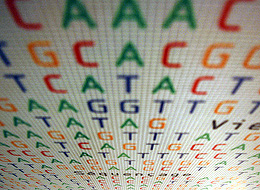Researchers develop new method for tracing human history and identifying clues to rare diseases
 A team of researchers, led by Stanford biologists Trevor Pemberton, DPhil, and Noah Rosenberg, PhD, has developed a method for teasing out genes underlying rare, recessive diseases that mainly crop up in populations with a high number of marriages among close relatives.
A team of researchers, led by Stanford biologists Trevor Pemberton, DPhil, and Noah Rosenberg, PhD, has developed a method for teasing out genes underlying rare, recessive diseases that mainly crop up in populations with a high number of marriages among close relatives.
In the comprehensive study (subscription required) of nearly 2,000 individuals from 64 populations, researchers took a different approach to examining runs of homozygosity (ROH), or regions of the genome where the copies inherited from our parents are identical. Homozygosity is what allows some individuals to have recessive characteristics such as blue eyes or cystic fibrosis, otherwise the dominant counterpart for a gene would these traits.
Researchers used a new statistical model to distinguish ROH that are associated with ancient population history from those that are related to recent consanguineous marriages. In doing so, they were able to identify three distinct ROH patterns. The short- and midde-length ROH both varied with geography. But as a recent Stanford Report story explains the longest ROH followed a different pattern and offered insights into hidden disease genes:
Younger and rarer, these runs don’t obey a simple out-of-Africa progression. Instead, they appear most often in societies that have a history of marriage between relatives - in the Middle East and Central and South Asia, in particular. Adherence to the caste system in certain Indian towns, for instance, can severely limit spouse options.
These newer runs are also the ones that may help researchers narrow in on the chromosomal regions harboring the genes behind rare, recessive conditions -typically a side effect of relatively recent consanguineous marriage.
Researchers should be able to compare the ROH of an individual with a disease to those same chromosomal stretches in unaffected members of the same population group. “If it’s frequently homozygous in the general population, you can largely discount the chromosomal region as a candidate,” said Pemberton. “If it’s rarely homozygous in the general population, it becomes a stronger candidate.”
The group has already begun tentative collaborations with medical geneticists and has released a genomic map of the ROH locations.
Previously: Stanford researcher aims to develop database built on DNA of Latin American descendants, Blond hair evolved more than once - and why it matters, Non-European representation woefully lacking in genomics studies, say Stanford geneticists and Roots of disease may vary with ancestry, according to Stanford geneticist
Photo by skreck






Comment